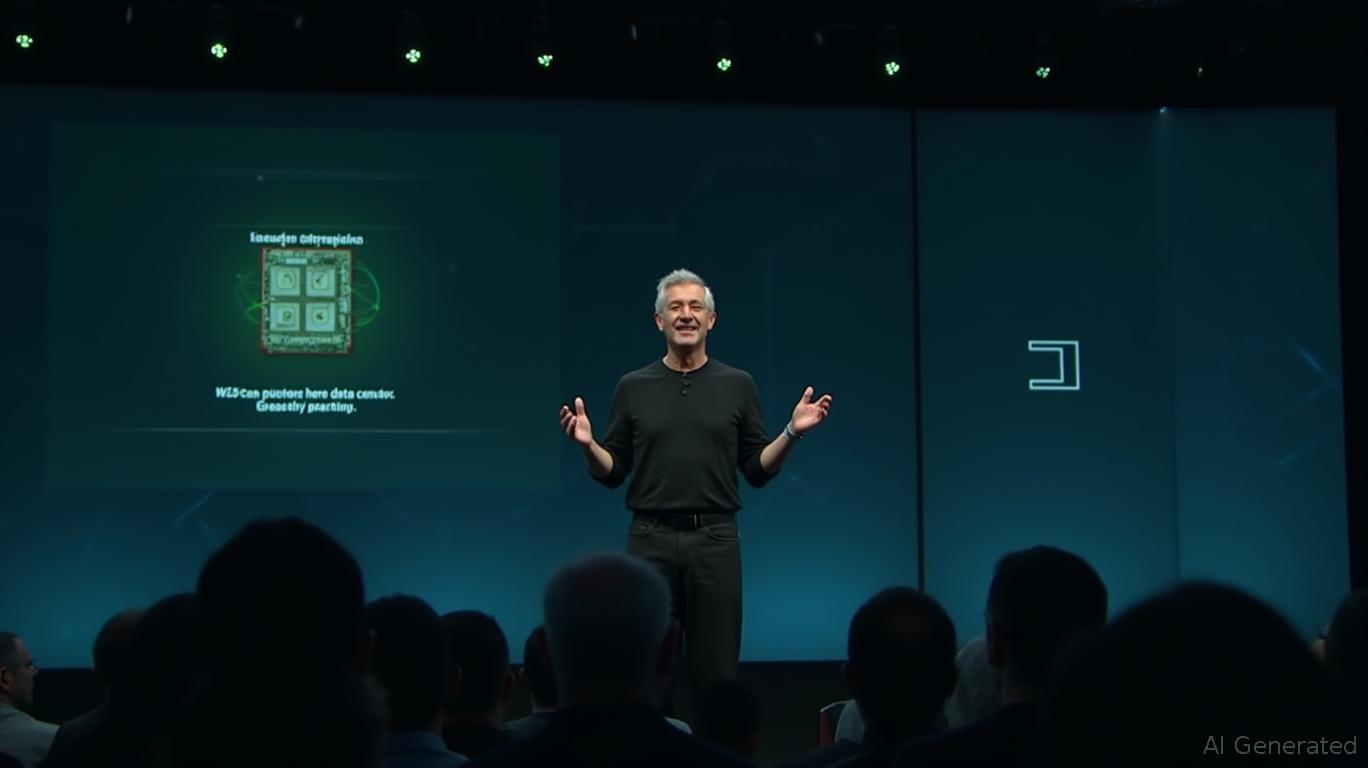Navigating the U.S.-China Tech Divide: Is Nvidia's Dip a Buying Opportunity or a Warning Sign?
The U.S.-China trade war has entered a new phase, with technology and semiconductors at the epicenter. For investors in tech stocks like
(NASDAQ: NVDA), the stakes have never been higher. Recent tariff suspensions, court rulings, and escalating export controls are creating both risks and opportunities. Let's dissect how these dynamics shape Nvidia's valuation and whether its current dip presents a strategic entry point or a red flag.The Tariff Truce: A Fragile Pause or Turning Point?
The May 2025 agreement between the U.S. and China to reduce tariffs—cutting U.S. rates from 145% to 30% and China's retaliatory tariffs to 10%—offered a temporary reprieve. But the 90-day truce has proven more symbolic than substantive. U.S. Treasury Secretary Scott Bessent's acknowledgment that talks are “a bit stalled” underscores the lack of progress. Meanwhile, a U.S. court ruling that President Trump overstepped his authority in imposing tariffs has added legal uncertainty, though the White House's appeal has temporarily reinstated the measures.
For Nvidia, the stakes are clear: its flagship H20 series AI chips face export restrictions to China, which it estimates could cost $8 billion in annual sales. While the truce may delay further escalation, the unresolved disputes over rare earth minerals, software exports, and student visas suggest this is far from over.

Regulatory Risks: A Double-Edged Sword
The U.S. has intensified its chokehold on China's tech ambitions. Export controls on semiconductor design software (e.g., Cadence, Synopsys) and bans on Huawei's Ascend chips aim to slow China's AI progress. But these moves risk backfiring. China's response—imposing rare earth export restrictions and accelerating domestic chip development—is forcing companies like Nvidia to confront a fragmented market.
Nvidia's CEO Jensen Huang has warned that U.S. restrictions will push China toward self-reliance, which could erode its long-term market share. The question now is: Can Nvidia pivot to offset losses in China through other markets, or is its dependence on that region too entrenched?
The Rare Earth Dilemma: Supply Chains Under Siege
China's dominance in rare earth processing (90% of global supply) adds another layer of risk. By restricting exports, Beijing is weaponizing its position, disrupting global supply chains for semiconductors and magnets critical to industries like automotive. Ford's recent plant closure due to rare earth shortages illustrates the ripple effects. For Nvidia, higher production costs or delays in securing components could further squeeze margins.
The Visa Issue: Talent and Tech Collaboration at Risk
The U.S. decision to revoke visas for Chinese students—particularly in advanced tech fields—threatens the talent pipeline that fuels innovation. Over 270,000 affected students include many working on projects tied to AI and semiconductors. While Nvidia's direct reliance on this talent pool is debated, the broader impact on R&D collaboration and global competitiveness cannot be ignored.
Is This a Buying Opportunity?
Nvidia's stock has already factored in some of these risks, trading at a 20% discount to its 52-week high. The near-term volatility stems from unresolved trade talks and legal battles, but the long-term narrative hinges on two factors:
- Geopolitical Resolution: If the truce evolves into a lasting deal, Nvidia could rebound as cross-border AI collaborations resume.
- China's Self-Reliance Success: If Beijing succeeds in building a domestic chip ecosystem, Nvidia's losses could be irreversible.
Investors must weigh the probability of these outcomes. The court's ruling on tariffs—potentially limiting executive overreach—offers a glimmer of hope for a negotiated solution. Meanwhile, Nvidia's non-China revenue streams (e.g., gaming, automotive) and AI-driven growth in cloud computing provide a buffer.
Final Analysis: Proceed with Caution, but Consider a Position
Nvidia's exposure to U.S.-China tensions is undeniable, but its core strengths—market leadership in AI, a robust pipeline, and secular tailwinds in data center demand—remain intact. The current dip could be a buying opportunity for long-term investors willing to bet on eventual resolution and Nvidia's ability to adapt. However, short-term traders should tread carefully: escalating trade measures or a failed truce could trigger further declines.
The verdict? Nvidia is a “hold” for now, but a strategic “buy” for those with a 3–5-year horizon and a tolerance for geopolitical uncertainty. Monitor trade talks closely, and keep an eye on China's progress in semiconductor self-reliance—those will be the true litmus tests for this stock's trajectory.
Data as of May 26, 2025.

Comments
No comments yet